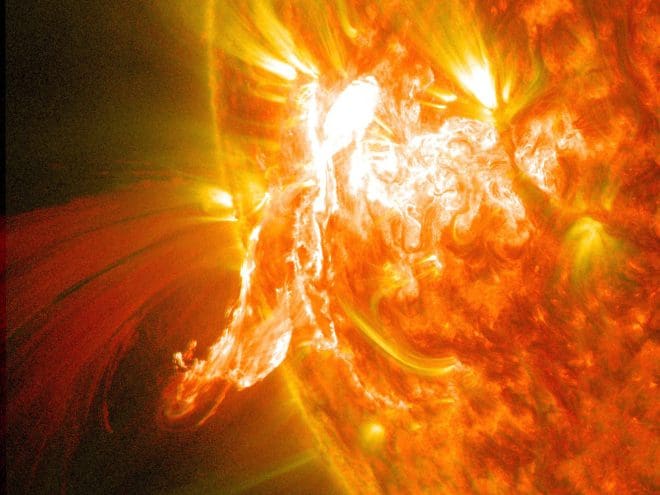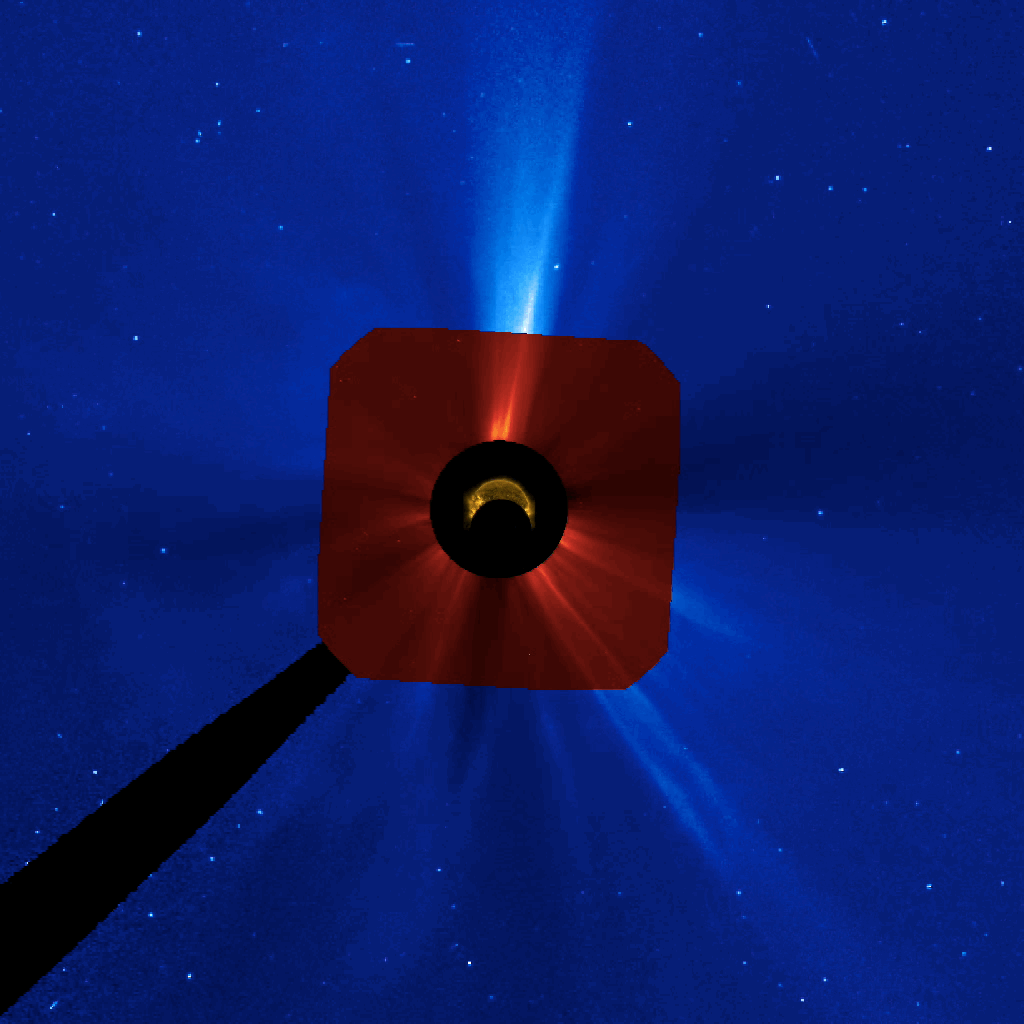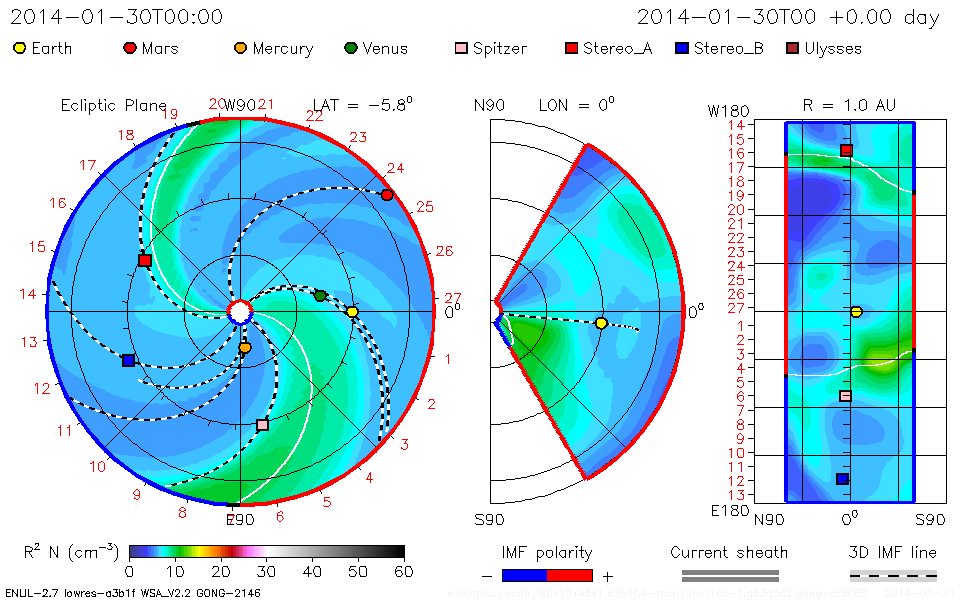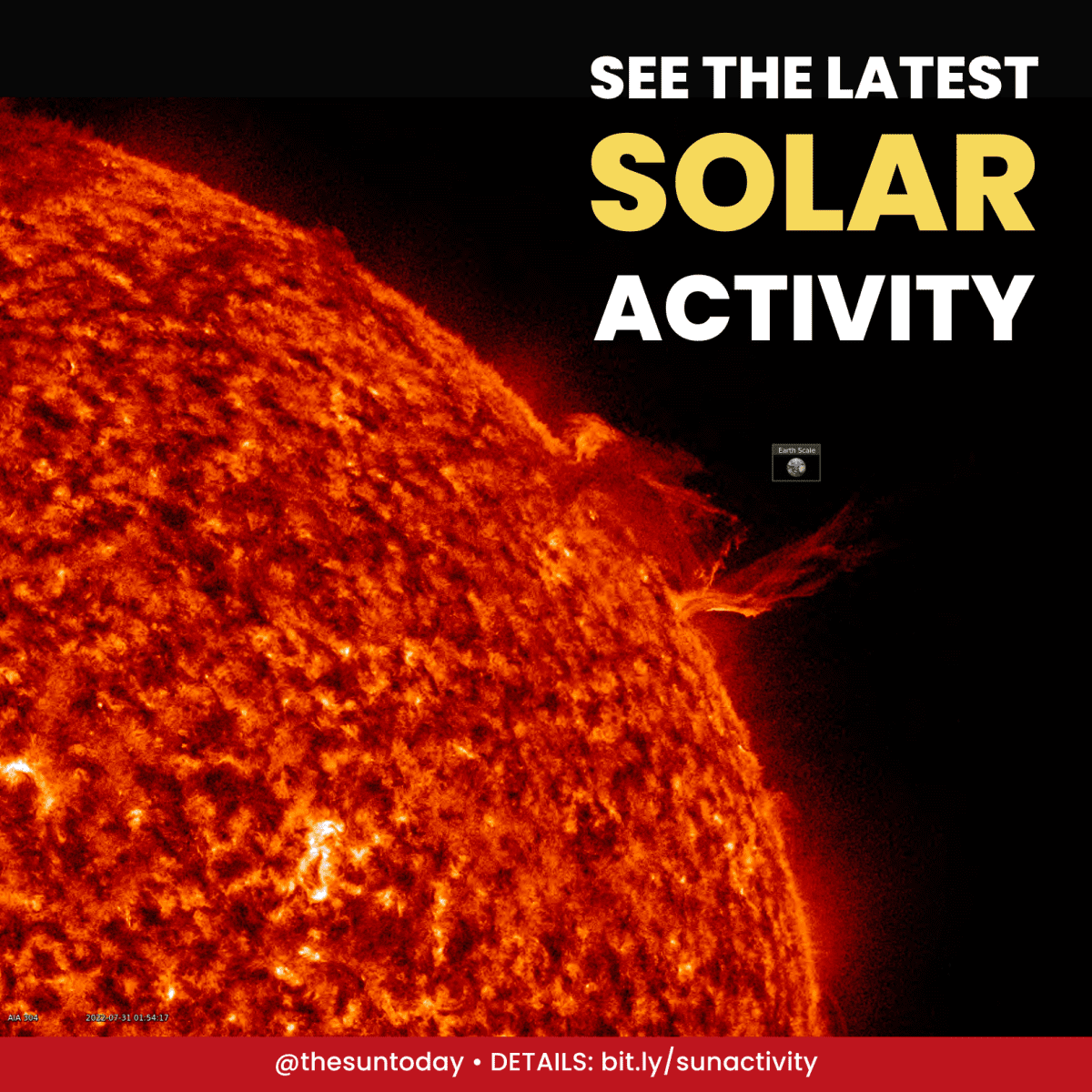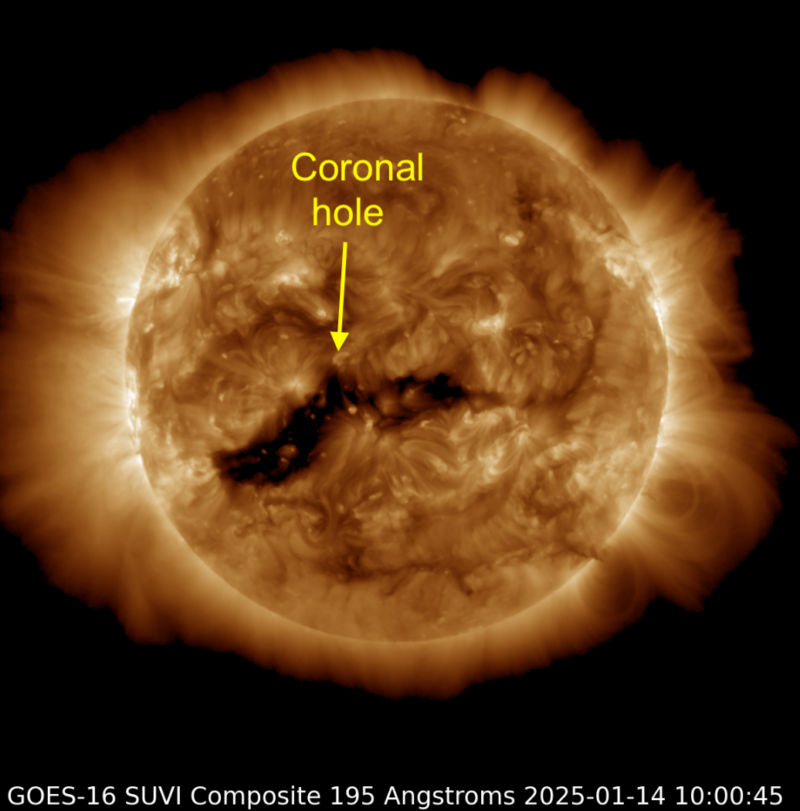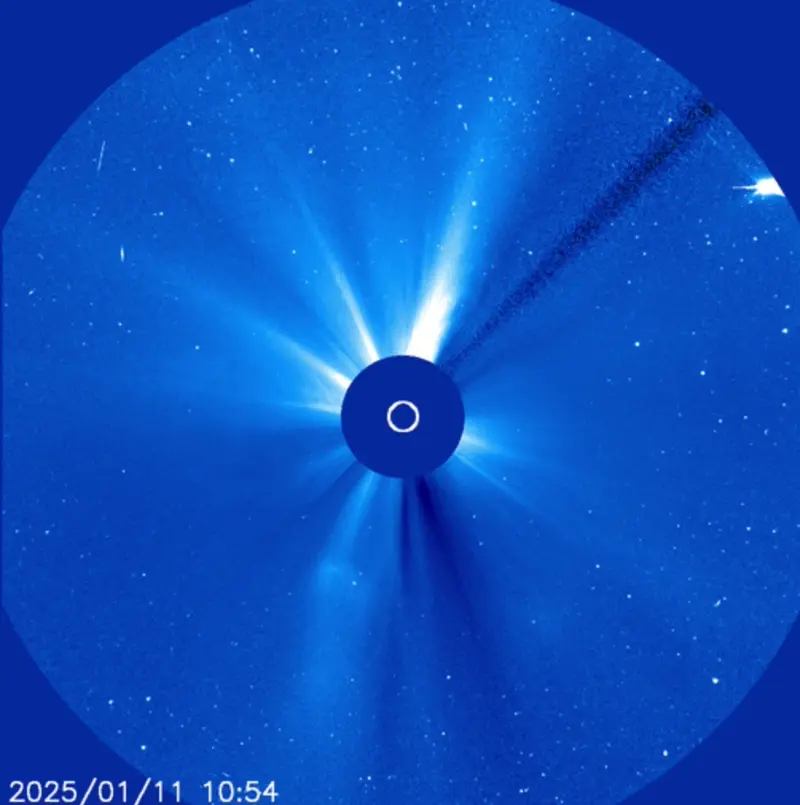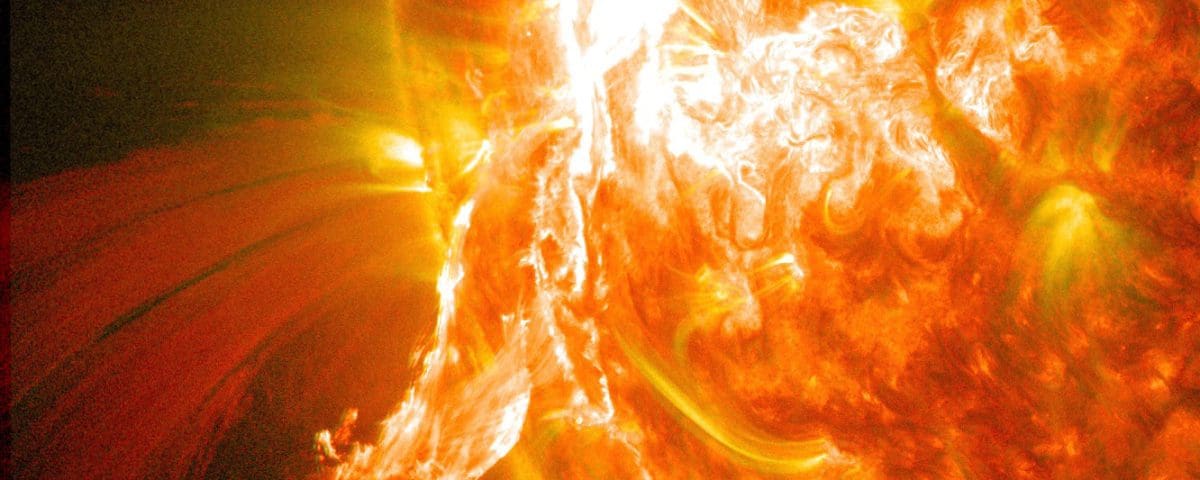
CME may impact Earth on Feb. 2, 2014 according to NASA SWRC research models.
At 16:11 UT Jan. 30, 2014, an M6.6 flare from AR11967 peaked in the GOES X-ray monitor. This was about 15 minutes after the completion of an extra long lunar transit observed by the SDO spacecraft.
The flare was associated with a filament/prominence eruption, which produced a CME observed by the STEREO Behind and SOHO spacecraft.
The CME had an estimated speed of slightly less than 1000 km/s. The CME is then classified as a C-Type or Common CME in the SWRC SCORE CME classification system.
Preliminary heliospheric modeling carried out at NASA GSFC Space Weather Research Center (SWRC) estimates the CME may impact Earth. Simulations indicate that the leading edge of the CME will reach Earth at about Feb. 2, 2014 around 7:20 UT (the standard quoted error to the time is +- 7 hours.) A rough estimate for geomagnetic activity is Kp from 4-6. This is an upper limit and corresponds to a below minor to moderated geomagnetic event. This could mean that high latitude aurora observers may see enhanced aurora.
The simulation also indicates that the CME may affect MESSENGER and Spitzer. The leading edge of the CME will reach MESSENGER on Jan. 31, 2014 at 5:04 UT and Spitzer on Feb. 1, 2014 at 19:05 UT.
Due to the presence of a large coronal hole NE of the source the CME is expected to be deflected.
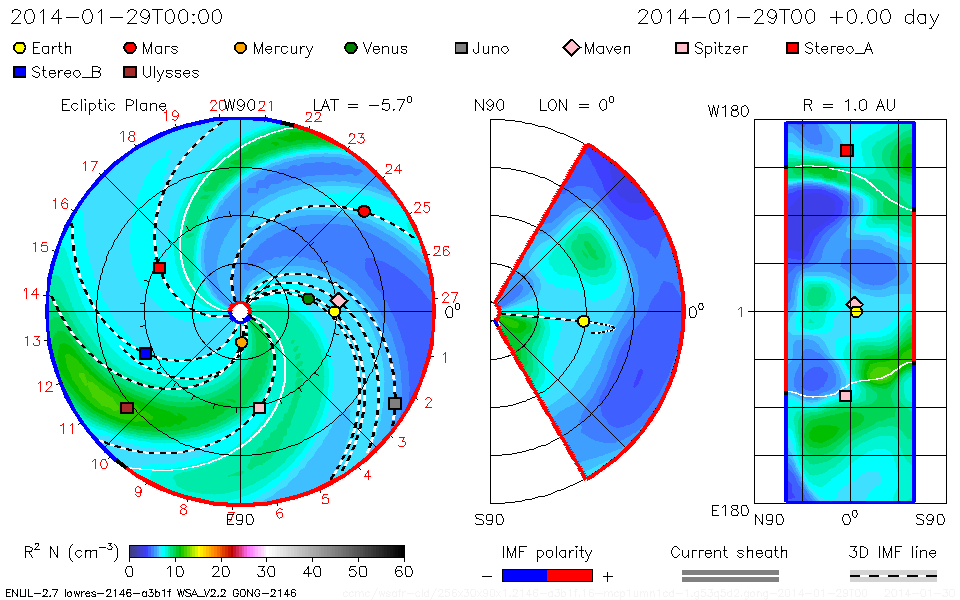
The NASA GSFC SWRC also carried out heliospheric ensemble modeling of the CME. SWRC CME ensemble is obtained by building sets of initial CME parameters and by carrying out separate simulations for each set. This approach will allow mapping of uncertainties in the initial CME parameters into statistical characterization of the CME impact at locations of interest. The event is again estimated to impact Earth. Out of 25 ensemble members, 14 indicate impact at Earth. Ensemble simulations indicate that the leading edge of the CME will reach Earth between about Feb. 1, 2014 at 18:22 UT and Feb. 2, 2014 at 15:43 UT. The average arrival is Feb. 2, 2014 at 5:44 UT. The ensemble modeling also estimates Kp from 4-6 as an upper limit.
credit: NASA/SDO/GSFC/SWRC/helioviewer


